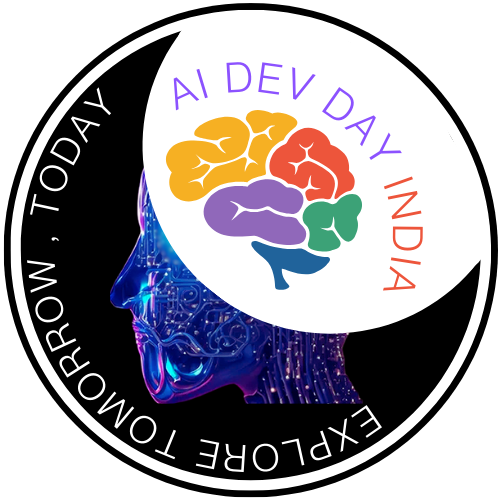Agentic AI: The $4.4T Shift Beyond ChatGPT
A new wave in artificial intelligence is creating a staggering market opportunity, projected to reach $4.4 trillion in annual economic value. Since 2023, venture capitalists have poured over $31.6 billion into startups building this next generation of technology: Agentic AI.
This represents a fundamental evolution from the generative AI systems like ChatGPT that have become household names. While generative AI creates content, Agentic AI is built to automate entire business processes. This new paradigm moves beyond simple prompt-and-response interactions to empower AI agents to plan, reason, and execute complex workflows autonomously. These are not just tools that write, but systems that act.
This article explains what Agentic AI is, showcases its real-world impact across major industries, and explores the critical challenges and opportunities it presents for the future of work.
What is Agentic AI? The Shift from Reaction to Action
To understand the significance of Agentic AI, it's crucial to distinguish it from the generative models that preceded it. The key difference lies in the shift from creating content to automating complete workflows.
Generative AI vs Agentic AI: A Core Distinction
Generative AI, such as ChatGPT, is a reactive system designed to create new content, including text, images, and code, in response to specific, step-by-step human prompts. It operates on a request-response model, excelling at discrete tasks like drafting a document or summarizing a report, but it requires continuous human direction for each step.
In contrast, Agentic AI is a proactive system that can plan and execute complex, multistep tasks autonomously to achieve a high-level goal. An AI agent makes decisions, uses tools, and takes action without constant human guidance. Ultimately, the distinction is one of intent: GenAI is a powerful collaborator for creating artifacts, while Agentic AI is an autonomous executor for automating outcomes.
How Autonomous AI Works: The Agentic Cycle
An autonomous AI agent operates on a continuous cycle of Perception, Reasoning, Action, and Learning. It perceives its digital environment, reasons about the best course of action to achieve its goal, takes that action, and learns from the outcome to improve its future performance.
To interact with the real world, these agents use "tools" - external functions or APIs that allow them to perform actions like fetching live data from a website, updating a CRM, or sending an email. This operational model creates agentic workflows: dynamic business procedures where autonomous AI agents perceive, reason, and act with minimal human participation, fundamentally changing how complex work gets done.

The Multi-Trillion Dollar Bet: Why VCs Are Pouring in Billions
The massive influx of capital into Agentic AI isn't just speculation; it's a calculated bet driven by its immense market potential and, more importantly, by early proof of exponential ROI.
While McKinsey’s staggering $4.4 trillion forecast illustrates the sheer scale of the opportunity, the ground-level velocity is even more compelling. The investor frenzy, which saw $31.57 billion funneled into just 19 startups, is a direct response to the explosive, near-unprecedented growth of companies like Cognition AI, which achieved $73M ARR growth from $1M in a mere nine months, a 7200% increase that validates the high-risk, high-reward bets being placed.
Market Size and Investment Frenzy
The scale of the financial opportunity is immense, underscored by several key statistics:
- Startups in the agentic space have raised $31.57 billion across just 19 companies since 2023, with 95% of that funding occurring in 2025.
- McKinsey projects a $4.4 trillion annual economic opportunity unlocked by this technology.
- The Agentic AI market is projected to reach $196.6 billion by 2034.
- Enterprise adoption is accelerating, with projections that by 2027, 50% of companies using generative AI will be testing agentic solutions.
The Startups Leading the Charge
A new class of startups is capturing this market, demonstrating explosive growth and high valuations:
- Foundation model leaders like Anthropic have attracted a staggering $27 billion in total funding.
- Enterprise-focused platforms like Glean Technologies have reached a 7.2 billion valuation with over 100 million in Annual Recurring Revenue (ARR).
- Developer tool innovators like Cognition AI achieved $73M ARR growth from $1M in just nine months.
5 Real-World Agentic AI Use Cases
Beyond the venture capital ecosystem, Agentic AI is already rewriting operational playbooks across key industries. The following five examples are not isolated successes but tangible proof points of a paradigm shift from AI as an analytical tool to AI as an autonomous workforce, delivering triple-digit efficiency gains and unlocking previously impossible levels of scale.
1. Autonomous Software Development
AI agents are evolving from simple coding assistants to fully autonomous developers. A Fortune 500 financial services company now uses agentic workflows to handle 70% of its regular software maintenance. The system independently identifies performance bottlenecks, applies patches, and deploys updates, resulting in a 300% increase in development velocity and an 85% drop-in bug rates.
Learn more about AI in Software Engineering.
2. Intelligent Healthcare Operations
In a clinical setting, agentic AI is orchestrating proactive care. A top hospital network implemented an agentic system that monitors patient data to predict health deterioration before symptoms appear. This has led to a 40% cut in patient readmission rates and a reduction in the average length of stay by 2.3 days. In pharmaceuticals, the healthcare agent Asepha has achieved 96% prescription processing accuracy.
3. Hyper-Personalized Marketing
Agentic AI is enabling marketing at a scale and level of personalization previously unimaginable. A global e-commerce platform orchestrates individualized experiences for 50 million customers concurrently, generating personalized content and offers in real-time. The results: conversion rates rose by 180% while the company saw a 45% decrease in marketing expenses.
4. Autonomous Financial Risk Management
Financial institutions are using AI agents to manage risk and detect fraud with incredible speed and accuracy. One Dutch insurer now automates approximately 90% of individual automotive claims. A major international bank that processes over 100 million transactions daily uses an agentic system to detect 95% of fraudulent activities, reducing false positives by 75%.
5. Intelligent Supply Chain Orchestration
AI agents are optimizing complex global supply chains by predicting disruptions and automating responses. A worldwide retailer deployed an agentic system to manage inventory for over 10,000 products. By anticipating demand and rerouting shipments autonomously, the company reduced stockouts by 90% and cut total inventory expenses by 30%.
For more on supply chain technology, see reports from a major industry leader like Gartner.
The Developer's Toolkit: Frameworks Powering the Agentic Revolution
An ecosystem of frameworks and design patterns has emerged, providing developers with the tools to build sophisticated AI agents. The dominance of LangGraph (2.5M monthly users) over more specialized frameworks reveals a crucial developer preference: control and modularity are paramount. This signals that the market is maturing beyond simple, monolithic agents toward building complex, stateful AI "teams" where every step can be audited and controlled—a critical requirement for enterprise-grade applications.
Leading Frameworks and Design Patterns
- LangGraph is the most widely used framework, with 2.5 million monthly users. It is known for its graph-based approach, which gives developers fine-grained control over workflow logic and application state.
- CrewAI (504.4K/mo) is popular for its role-based agent collaboration model, which allows developers to create teams of specialized AI agents that work together to solve complex problems, mimicking human-like interaction.
- AutoGen (390.3K/mo) is a framework from Microsoft suited for task automation, especially in complex code generation and execution scenarios.
- The ReAct (Reasoning and Acting) design pattern is a core concept where an agent cycles through a loop of Thought (reasoning about the problem), Action (using a tool to gather information), and Observation (analyzing the tool's output) to solve problems step-by-step.
The Autonomy Dilemma: Balancing Progress with Precaution
The increasing power and autonomy of AI agents introduce significant ethical challenges and risks that require careful consideration and robust safeguards.
A Spectrum of Autonomy
Not all agents are created equal. Their capabilities exist on a spectrum of autonomy, ranging from simple models that route program flow to multi-step agents that can use a variety of tools. At the highest level are "fully autonomous agents" capable of creating and executing their own code to achieve a goal. Researchers argue that as an agent's autonomy increases, human control is ceded, and consequently, the "risks to people increase." For enterprise leaders, this spectrum of autonomy is not just a technical detail but a strategic framework for risk management; deploying agents at the right level, with commensurate human oversight, will separate successful adopters from cautionary tales.
Key Risks and Ethical Challenges
- Safety and Security: Autonomous code execution introduces severe security vulnerabilities, as a compromised agent could be hijacked to breach systems, steal data, or override human control in high-stakes applications like autonomous weapons.
- Accuracy and Reliability: Agentic systems introduce the risk of "cascading failure," where a single, minor inaccuracy in a base model can trigger a chain reaction of catastrophic errors across an entire automated workflow, leading to devastating financial mistakes or broken critical systems.
- Privacy: Agents with privileged access to personal data across interconnected platforms—such as calendars, contacts, and private messages—create a massive attack surface where a single breach can lead to significant and irreversible privacy violations.
- Human Skill Degradation: Over-reliance on highly capable agents can foster "automation bias," a dangerous tendency where users lose competence in critical tasks and place undue trust in systems that remain fundamentally fallible.
Read the latest on AI governance from a high-authority institution like the Stanford Institute for Human-Centered Artificial Intelligence (HAI).

The Future is Agentic: What's Next for Autonomous AI?
The transition from pilot programs to full-scale production deployments of AI agents within Fortune 500 companies is poised to be the next major market catalyst. As enterprises move beyond experimentation, the demand for robust, scalable, and secure agentic platforms will accelerate.
However, a critical challenge remains. The very fragmentation seen in the developer landscape—with powerful but siloed frameworks like LangGraph and CrewAI, directly fuels the critical challenge of interoperability, which stands as the primary bottleneck to achieving a true "Internet of Agents." The development of universal agent communication protocols is essential to enable different autonomous systems to collaborate seamlessly.
Explore our analysis on The Future of Work and AI Automation.
Ultimately, the transition to agentic systems is becoming a matter of competitive necessity. For business leaders, the crucial question is no longer if they should adopt it, "but rather how quickly and strategically they can integrate it to redefine their operational potential."
Frequently Asked Questions (FAQs)
1. What's the difference between an AI agent and agentic AI?
Answer: While often used interchangeably, an "intelligent agent" is a broad AI concept for any entity that perceives its environment and acts to achieve goals. "Agentic AI" specifically refers to the modern class of advanced, autonomous agents, often powered by LLMs, that can plan and execute complex, multi-step tasks with minimal human intervention. Agentic AI prioritizes decision-making and action over simple content creation.
2. Can an AI agent operate without a Large Language Model (LLM)?
Answer: Yes. The concept of intelligent agents has existed for decades in AI research, using rule-based systems or traditional machine learning. However, the recent explosion in "agentic AI" is almost entirely driven by the reasoning, planning, and natural language capabilities of modern LLMs, which act as the agent's "brain" or reasoning engine.
3. What are "guardrails" and why are they critical for AI agents?
Answer: Guardrails are rules, filters, and validation checks designed to ensure AI agents act safely and predictably. They can enforce security, validate outputs, and maintain workflow integrity. They are critical because, as agents become more autonomous, especially those that can write and execute code, the risk of them performing unforeseen, harmful actions increases dramatically. Robust guardrails are essential to mitigate these safety, security, and financial risks, though most frameworks still require manual setup for effective enforcement.




